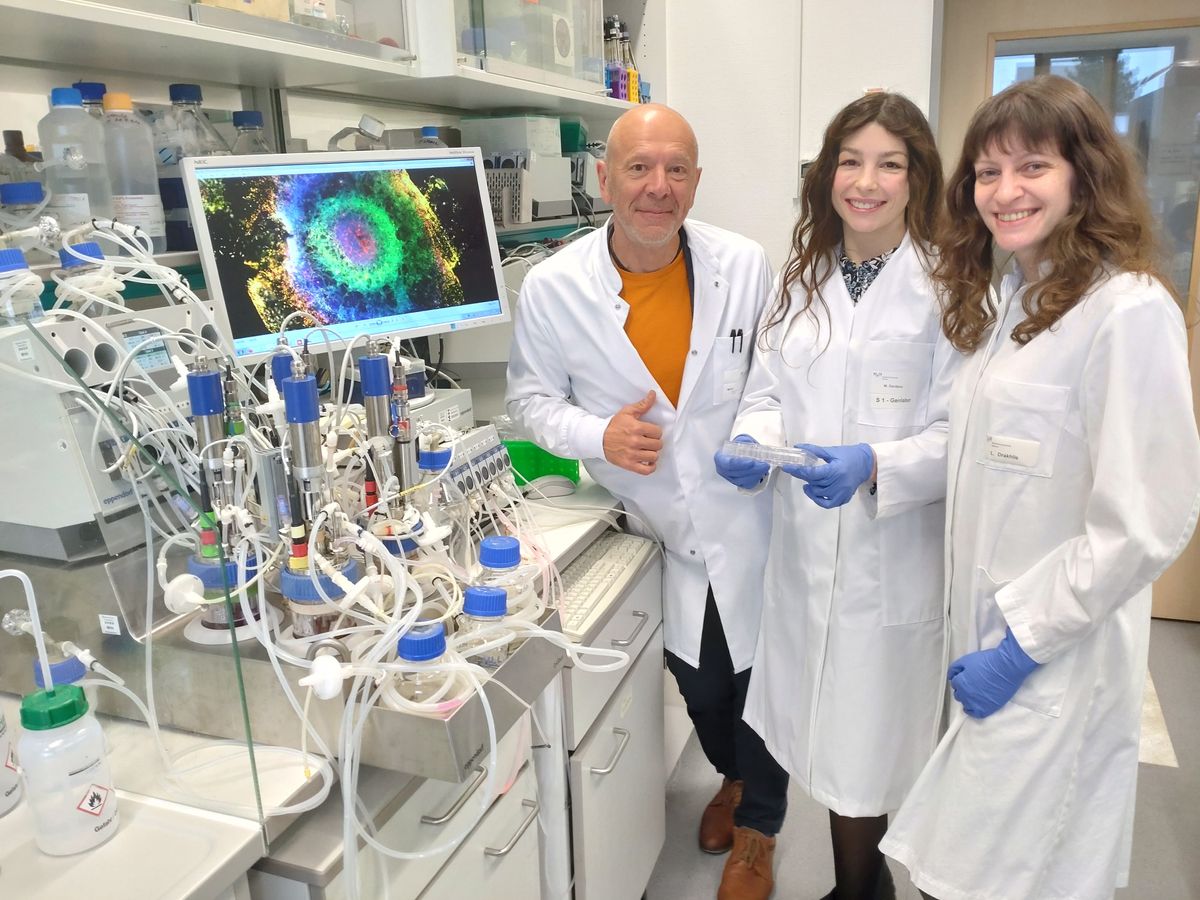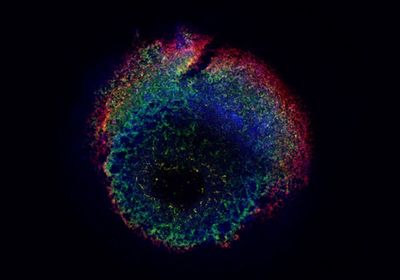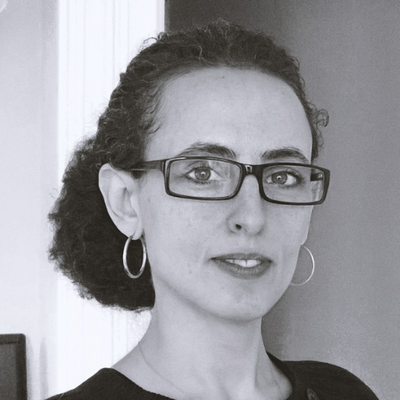ABOVE: Blood-generating heart-forming organoids are poised to revolutionize scientists’ understanding of how multi-layered heart tissue and blood cells co-develop during human embryogenesis. Liam Wilson
Getting blood from a stone is impossible, but growing blood from 3D mini hearts is now a reality. A research team led by Robert Zweigerdt, a developmental biologist at the Hannover Medical School, previously used human pluripotent stem cells to produce heart-forming organoids (HFOs) in a dish.1 These mini primordial heart constructs display the multiple tissue layers that exist in the developing human heart. They also contain the latent capacity to produce blood cells. In a recent study published in Nature Cell Biology, Zweigerdt and his team tweaked their HFO model to create blood-generating (BG)-HFOs, which recapitulate key aspects of embryonic blood cell development.2
Long before human bone marrow takes over the task of producing blood, discrete waves of blood cell production occur in the developing embryo. Miriana Dardano, a postdoctoral researcher in Zweigerdt’s lab and coauthor of the study, modified the original HFO model using cytokine and growth factor cocktails that encouraged these organoids to produce blood cells, including erythrocytes, monocytes, and macrophages. The result was a multi-tissue organoid made up of cardiac, endothelial, and hematopoietic tissues.
“It was very nice to see that upon modification of the protocol, it's possible to model hematopoiesis in a system that's already recapitulating aspects of heart development. This is because the hematopoietic, endothelial, and cardiac tissues are all derived from the same embryonic tissue,” Dardano said. “Developmentally, it makes sense. We have all those tissues developing simultaneously and they [follow] a specific pattern that recapitulates the morphology of the intraembryonic region where cardiac tissue develops, and hematopoiesis arises.”
Embryogenesis depends on a finely orchestrated, reproducible program of pattern formation that creates the multi-tissue structures that eventually develop into organs. The human heart is no exception and by mimicking its highly conserved tissue design, Zweigerdt’s team created new opportunities for disease modeling. “With these organoids, we can now study in vitro mechanisms of human development. What is really exciting is [the potential] for more complex in vitro modeling of congenital [heart] diseases,” Zweigerdt said. “The consequence of, let's say, a gene knockout or a chemical modulation that modifies development will be expressed in this pattern formation, which is something that can be monitored relatively easily using microscopy.” For example, the BG-HFO model can be used to gain insight into how in utero exposure to tobacco or certain drugs causes congenital heart defects. The model also has potential for drug screening and regenerative medicine applications.

Lika Drakhlis, a postdoctoral researcher in Zweigerdt’s lab and coauthor of the study, was the first to create the original HFO model. “It's very fascinating to do developmental biology in a dish, to see what happens in the embryo, what happens with stem cells,” Drakhlis said. In the case of the BG-HFO model, the key was working out how to direct the stem cells with just the right combination of chemical cues to nudge them down a developmental pathway that mimics embryogenesis of the heart. The fact that they recapitulated embryonic blood development was extraordinary. “I was very happy and surprised to see that the model is more potent than I could ever imagine,” Drakhlis said.
Sridhar Rao, a clinician scientist and investigator at the Versiti Blood Research Institute who was not involved in this study, views this work as an important advancement. “I was surprised that with some subtle tweaking they were able to get blood-forming units from the heart-forming organoids,” Rao said. “During normal embryonic development of placental mammals, the blood system and cardiovascular system develop at the same time, but the influence of the two [on each other] has been extremely hard to study. This work is an important advance in the field because it allows both to be studied in a more mechanistic way in a dish.”
Zweigerdt looks forward to exploring the full potential of the BG-HFO model. “The maturity of these tissues is limited, which is something we’re working on to see whether this can be further developed towards [greater] maturation,” Zweigerdt said. For now, the primordial hearts provide a fascinating glimpse into how human cardiac, endothelial, and multipotent hematopoietic cells co-develop, bringing the flesh and blood of embryonic development to scientists’ fingertips.
- Drakhlis L, et al. Human heart-forming organoids recapitulate early heart and foregut development. Nat Biotechnol. 2021;39(6):737-746.
- Dardano M, et al. Blood-generating heart-forming organoids recapitulate co-development of the human haematopoietic system and the embryonic heart. Nat Cell Biol. 2024;26:1984-1996.




